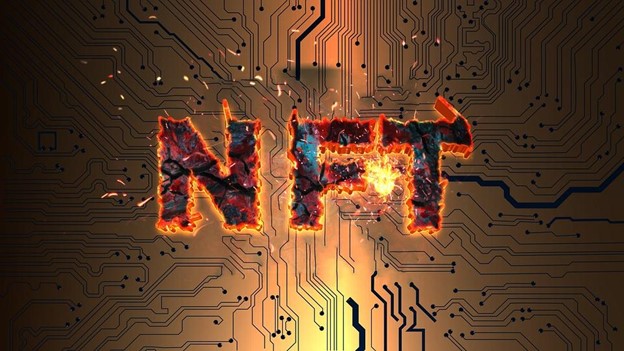We enjoy NFTs a lot these days; however, it is disappointing because they are not works of art. It is a deception that damages aesthetic tradition as a whole as well as art history.
What sounds like an argument during a debate in 2022 about NFTs was said in 1940 when gallerists were talking about an Art Brut display.
The dismissal of NFTs by the conceptual art market and the portrayal of these digital tokens as a novelty, a bubble, and a fresh generation of tulip mania is wrong. Undoubtedly, the abrupt collapse of the NFT marketplace, the FTX deception, and the absence of education make it difficult to encourage the art industry to look beyond the financial bubble. However, NFTs will bring about a significant structural change in the way art is produced, evaluated, and sold. Let’s look at more details in this article.

NFTs in Art
NFTs are not art, despite popular perception. The ridiculously overpriced, celebrity-endorsed JPEGs that are frequently connected to NFTs will vanish. But the tools for verifying the authenticity of artworks will remain valid. The convergence of blockchain technology, cryptocurrency, and digital art will cause a significant structural change in the art market.
If a work is not recorded on the blockchain, buyers won’t be buying it. Artists will have more authority over their creations and receive royalties from subsequent sales. Moreover, additional collectors will participate in a transparent market, and the art industry will be better controlled.
An artist will probably register every piece of art that exits a studio on the blockchain in the long term. They will receive royalties when it is traded. They may work more autonomously and not solely depend on galleries to market or authenticate their creations. As a result, artists will profit more from each sale of their work.
Additionally, new revenue sources will be used by artists. For instance, they could turn a portion of their audience into a paying customer in exchange for premium features, exclusive material, or early access. The power structures will shift as a result of this modification to the commission’s organizational structure. From galleries to artists, power will change hands in the art world.
For artists, increased independence also means increased accountability. In a future where buyers and artists interact directly, artists will have to develop their entrepreneurial skills and learn how to handle new responsibilities. While some will happily collaborate with galleries that handle the tasks of selling, advertising, placing, and managing, others might recruit extra staff.
The new art ecosystem’s evolution will have the most effect on collectors. Since the middleman’s position has diminished, they will have closer, more direct interaction with artists. Collectors will feel more comfortable purchasing art when every piece of artwork is recorded on the blockchain since they will be aware of current and historical pricing.
The conventional art market is quite complicated and always needs a middleman. NFTs simplify the sale process and enable significantly faster transactions, illuminating simpler ways to generate a profit.
Final Thoughts
Through improved community engagement and empowerment, art institutions can greatly utilize the new possibilities that NFTs and their underlying technology provide us. The benefits of blockchain and NFTs will create a stronger art market that is equitable and more democratic. The conversion of a large number of new visitors into consumers who buy art is greatly supported by a market that is more welcoming and less restricted.
